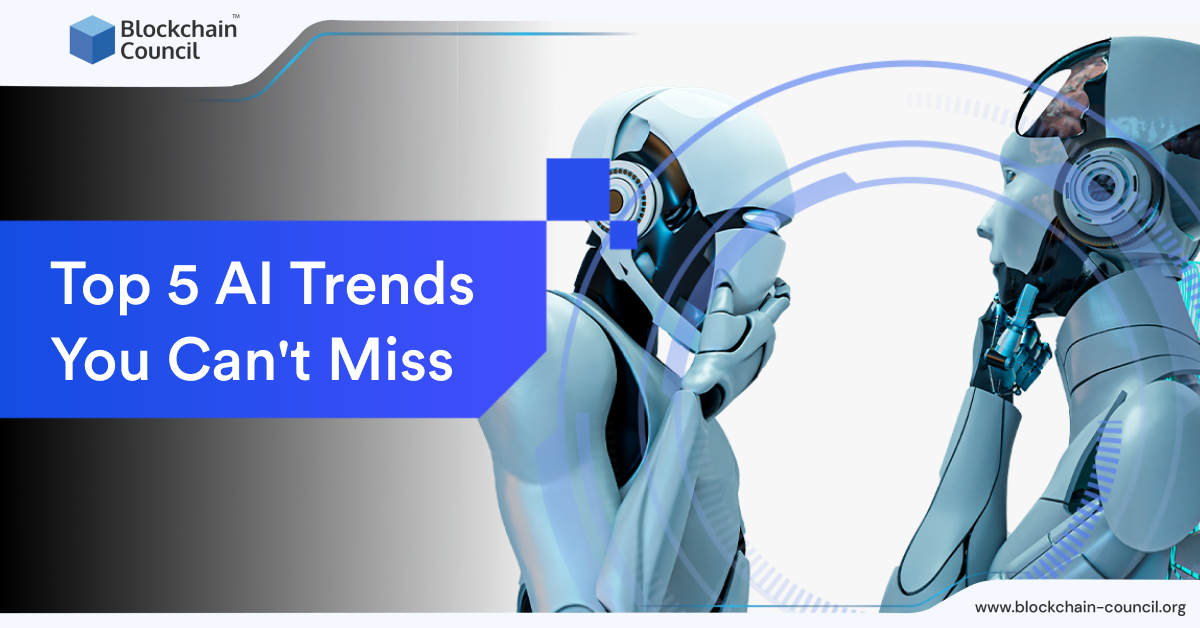
- Blockchain Council
- September 14, 2023
Summary
- The AI market is growing rapidly, projected to reach $407 billion by 2027.
- Challenges include addressing concerns about misinformation from AI.
- Rapid advancements in AI are transforming industries, such as self-driving cars becoming more common.
- Trend 1: Generative AI, which can create content autonomously.
- Trend 2: Natural Language Processing (NLP) enables machines to understand and generate human language.
- Trend 3: Explainable AI (XAI) aims to make AI transparent and accountable.
- Trend 4: Increased collaboration between humans and AI is reshaping industries.
- Trend 5: Low-code/No-code AI democratizes AI application development.
- You should get an AI certification to land a trending AI job.
- Staying updated on these trends is crucial in the fast-evolving AI landscape.
Introduction
In the fast-paced realm of technology, staying updated on AI trends is not just a choice but a necessity. The AI landscape is evolving at an unprecedented pace, and it’s crucial for professionals and beginners alike to keep their fingers on the pulse of this dynamic field. As we delve into the top five AI trends that you can’t afford to miss, it becomes evident why this knowledge is indispensable.
Why Staying Updated on AI Trends is Crucial
The AI market is on a trajectory that’s nothing short of astounding. By 2027, it’s projected to reach a staggering $407 billion, experiencing substantial growth from its estimated $86.9 billion revenue in 2022. This meteoric rise in market value signifies the increasing adoption of AI across industries and the immense opportunities it presents.
This growth isn’t confined to the market alone. AI is poised to make a significant impact on economic growth. By 2030, it’s expected to contribute a remarkable 21% net increase to the United States GDP. Such a substantial contribution underscores AI’s role as a driving force behind economic expansion.
However, the ascent of AI isn’t without its challenges. Over 75% of consumers express concerns about misinformation from AI. Addressing these concerns and ensuring the responsible use of AI is paramount as we navigate this transformative era.
Mention of the Rapid Advancements in AI Technology
One of the defining features of AI is its rapid evolution. Just consider the automotive industry. By 2030, it’s estimated that 10% of vehicles will be driverless. This shift is part of the global trend towards self-driving cars, with the market forecasted to grow from 20.3 million vehicles in 2021 to a staggering 62.4 million. These advancements not only change how we commute but also reshape entire industries.
Moreover, the global AI landscape is not limited to a single region. China, in particular, is making remarkable strides. It’s projected that by 2030, AI will contribute a staggering 26.1% to China’s GDP, solidifying its position as a global AI leader. This global perspective emphasizes the need to understand AI trends on a worldwide scale.
Trend 1: Generative AI
Definition
Generative AI, an exciting subset of artificial intelligence (AI), refers to the technology that enables machines to create content autonomously, often mimicking human creativity. It’s like having AI-powered artists, writers, and composers at your fingertips.
Use Cases
Generative AI has found its application across various domains, revolutionizing industries. Here are some compelling use cases:
- Content Generation: Generative AI can create high-quality written content, such as articles, product descriptions, and marketing copy. It’s a game-changer for content marketers and bloggers looking to produce vast amounts of engaging material. For example, the Associated Press uses an AI tool called Wordsmith to generate news articles on corporate earnings reports. Wordsmith can produce thousands of articles in seconds, freeing up journalists to focus on more complex stories.
- Art and Design: In the world of art and design, Generative AI can generate unique paintings, sculptures, and even fashion designs. It pushes the boundaries of creativity by blending algorithms with human sensibilities. The Art and Artificial Intelligence Laboratory at Rutgers University has developed a system called AICAN that can generate original paintings. AICAN uses deep learning algorithms to analyze existing artwork and create new pieces that blend elements from different styles.
- Language Translation: We’ve all used online translation services, but Generative AI takes it a step further. It can translate languages with remarkable accuracy, even understanding context and nuances. Google’s AI translation service employs Generative AI to provide accurate translations. It’s not just about words; it captures the essence of the language.
- Chatbots and Customer Support: You’ve probably interacted with AI chatbots without realizing it. Generative AI powers these chatbots, making customer support more efficient and responsive, especially in handling routine queries. For instance, Capital One’s Eno is an AI-powered chatbot that helps customers manage their finances. Eno can answer questions about account balances, transactions, and even provide personalized spending insights.
- Healthcare: In healthcare, Generative AI assists in medical research by analyzing vast datasets to identify patterns and potential treatment options. It’s a valuable tool for predicting disease outbreaks and personalizing patient care. IBM’s Watson Health is a platform that uses AI to analyze vast amounts of medical data to identify patterns and potential treatment options. Watson Health has been used to help diagnose rare diseases, predict disease outbreaks, and personalize cancer treatments.
Trend 2: Natural Language Processing (NLP)
Definition
Natural Language Processing, or NLP, is a branch of artificial intelligence that focuses on the interaction between computers and human language. It enables machines to understand, interpret, and generate human language in a valuable way. NLP algorithms allow computers to analyze and derive insights from text and speech data.
Use Cases
NLP has a wide range of applications across various industries. Here are some key use cases:
- Sentiment Analysis: Companies like Hootsuite use NLP to analyze social media posts and determine public sentiment towards a product, brand, or topic. They can then adjust their strategies accordingly. For instance, by monitoring social media discussions, Hootsuite can gauge customer satisfaction and adapt their marketing campaigns to meet the evolving needs of their audience.
- Chatbots and Virtual Assistants: Virtual assistants like Siri and chatbots on websites use NLP to understand and respond to user queries. They can provide information, perform tasks, or direct users to the right resources. These intelligent assistants make everyday tasks more convenient for users. For instance, Siri can help you set reminders, answer trivia questions, or even provide directions to your destination.
- Language Translation: Machine translation tools like Google Translate use NLP to translate text between different languages accurately and quickly. This technology breaks down language barriers, allowing people from diverse backgrounds to communicate effectively. For example, when traveling abroad, you can use Google Translate or ChatGPT to instantly translate signs, menus, or conversations, making your experience smoother and more enjoyable.
- Content Summarization: NLP algorithms can summarize lengthy articles, research papers, or documents, making it easier for professionals to extract key insights from large volumes of text. For instance, Scribbr provides a guide on how to write a summary in 8 steps. This simplifies the process of condensing complex information, helping researchers and students save time while maintaining the integrity of the original content.
- Healthcare: In the medical field, NLP helps in extracting valuable information from patient records, aiding in diagnosis, and even predicting disease outbreaks by analyzing health-related text data. For instance, IBM Watson Health uses NLP to analyze vast amounts of medical data to identify patterns and potential treatment options. This assists healthcare professionals in making more informed decisions and improving patient care.
Trend 3: Explainable AI
Definition
Explainable AI is the art of demystifying the black box. It’s about creating AI systems that can not only make decisions but also provide clear and understandable explanations for those decisions. Unlike the opaque nature of traditional AI, XAI aims to make AI more transparent, accountable, and accessible to everyone.
But why is transparency so crucial? Imagine you’re applying for a loan, and your application gets rejected by an AI-powered algorithm. With traditional AI, you might be left in the dark, wondering why you didn’t qualify. Explainable AI changes that. It gives you insights into why the decision was made, such as highlighting factors like your credit history, income, or recent financial behavior.
Use Cases
- Healthcare Diagnosis and Treatment: In the healthcare sector, XAI is used to assist doctors in diagnosing diseases and recommending treatment plans. It provides clear explanations for its diagnoses, helping medical professionals understand the reasoning behind a particular diagnosis or treatment suggestion.
- Financial Risk Assessment: Banks and financial institutions employ XAI to assess credit risk when evaluating loan applications. It offers detailed insights into the factors influencing a decision, such as credit scores, income levels, and financial history. This Transparency aids applicants in understanding why their application was approved or denied.
- Autonomous Vehicles: Self-driving cars rely on XAI to explain their actions and decisions on the road. For example, when an autonomous vehicle makes a sudden lane change, it can provide a real-time explanation, such as avoiding an obstacle or merging onto a faster route. This transparency builds trust and safety in autonomous transportation.
- Customer Service Chatbots: Chatbots equipped with XAI can provide more informative responses to customer inquiries. They explain the rationale behind their suggestions or actions, which enhances the user experience and helps customers better understand the solutions or information provided.
- Legal and Compliance: In the legal field, XAI is used for contract analysis and compliance monitoring. It can explain why a specific contract clause may pose a legal risk based on historical legal cases and regulations. This assists legal professionals in making informed decisions and mitigating potential legal issues.
Trend 4: Increased Collaboration between Humans and AI
Definition
The trend of increased collaboration between humans and AI, often referred to as “Human-AI Collaboration,” signifies the growing synergy between artificial intelligence systems and human expertise. It involves AI technologies augmenting human capabilities and vice versa, creating a powerful partnership that unlocks new possibilities.
Use Cases
- Healthcare Diagnosis and Treatment: In the field of healthcare, AI-powered diagnostic tools are working alongside medical professionals to enhance accuracy and efficiency. For instance, IBM’s Watson for Oncology assists oncologists in recommending personalized cancer treatment plans based on vast datasets and medical research.
- Content Creation and Editing: Content creators are benefiting from AI tools like Grammarly, which provide real-time grammar and style suggestions. These tools improve the quality of written content while saving time for writers and editors.
- Financial Trading: AI algorithms are transforming the financial industry by analyzing market data at lightning speed. Hedge funds like Renaissance Technologies employ AI-driven trading strategies to achieve remarkable returns.
- Customer Support and Chatbots: Companies use AI-powered chatbots to provide instant customer support. A notable example is Zendesk’s Answer Bot, which uses AI to understand customer inquiries and deliver relevant responses.
- Autonomous Vehicles: The automotive industry is witnessing the rise of self-driving cars, where AI systems collaborate with human drivers to enhance safety and efficiency. Tesla’s Autopilot feature is a prime example, using AI to assist drivers with tasks like lane-keeping and adaptive cruise control.
This trend is not only reshaping various industries but also revolutionizing the way we work and interact with technology. As AI becomes more integrated into our daily lives, the collaboration between humans and AI will continue to drive innovation and improve our capabilities.
Trend 5: Low-code/No-code AI
Definition
Low-code/No-code AI, often abbreviated as LC/NC AI, is a cutting-edge technology that empowers individuals and organizations to develop artificial intelligence applications with minimal coding effort. It’s a game-changer in the AI landscape, democratizing the creation of AI solutions by reducing the technical barriers.
Use Cases
- Automated Customer Support Chatbots: Automated Customer Support Chatbots are AI-powered chatbots that can assist customers in resolving their queries and issues. For instance, Core dna offers customer service to site visitors via a chatbot widget. The bot is immediately present when a customer visits the website, and it can help with a variety of tasks, such as answering frequently asked questions, providing product information, and resolving issues. Another example is Impulse Creative’s chatbot, designed to help customers with their marketing needs. It can answer questions about marketing strategies, provide tips on how to improve marketing campaigns, and more.
- Predictive Analytics for E-commerce: Predictive Analytics for E-commerce is a technique that uses data, statistical algorithms, and machine learning to identify the likelihood of future outcomes based on historical data. For example, Amazon uses predictive analytics to recommend products to its customers based on their purchase history and browsing behavior. This personalized approach increases sales and customer satisfaction. Another example is eBay, which used Facebook Messenger to inform users about upcoming promotional campaigns. These chatbots can be programmed to send payment gateways so customers can finalize the process without changing channels.
- Medical Diagnosis Assistants: Medical Diagnosis Assistants are AI-powered assistants that help healthcare professionals diagnose diseases. For instance, Curai Health uses machine learning models to assist doctors in diagnosing diseases. The models are trained on large datasets of medical records and can provide doctors with a list of possible diagnoses based on the patient’s symptoms. Another example is IBM Watson Health’s Clinical Decision Support System (CDSS), which provides doctors with evidence-based recommendations for diagnosis and treatment.
- Content Recommendation Engines: Content Recommendation Engines are platforms that analyze user behavior and preferences to suggest articles, videos, or products. For example, Facebook uses a content recommendation engine to show users articles and videos that may be of interest to them. Netflix employs multiple filtering methods and machine learning algorithms to make recommendations to users. These recommendations suggest TV shows or movies based on the user’s watch history or engagement with specific genres. Another example is Europa Press, which saw a 46% increase in clickthrough rate and a 78% revenue increase by using content recommendation widgets.
- Financial Fraud Detection: Financial Fraud Detection is the use of technology to identify fraudulent activities in financial transactions. For instance, PayPal uses machine learning algorithms to detect fraudulent activities in real-time. The algorithms analyze transaction data such as location, device information, and purchase history to identify suspicious activities. Another example is FICO Falcon Fraud Manager, which uses predictive analytics to detect fraudulent activities in credit card transactions.
Want to Land a Trending Artificial Intelligence Job? Get Certified Today!
Conclusion
In this fast-evolving digital landscape, staying ahead of the curve is not just an advantage; it’s a necessity. We’ve explored the Top 5 AI Trends that are reshaping industries and pushing the boundaries of what’s possible. From the widespread adoption of Natural Language Processing (NLP) to the incredible potential of autonomous systems, these trends are revolutionizing the way we work, live, and interact with technology.
These AI trends are not isolated phenomena; they are interconnected threads in the tapestry of our future. Whether you’re a newcomer eager to explore the possibilities or a seasoned pro looking to stay at the forefront, embracing these trends is your compass in navigating the AI landscape.
Frequently Asked Questions
- Staying updated on AI trends is crucial because the AI market is rapidly growing, and it’s expected to reach $407 billion by 2027.
- AI is also projected to contribute 21% net increase to the United States GDP by 2030, highlighting its impact on economic growth.
- Addressing concerns about misinformation from AI and ensuring responsible use are essential as AI evolves.
- Generative AI is technology that enables machines to create content autonomously, like AI-powered artists, writers, and composers.
- Use cases include content generation, art and design, language translation, chatbots, and healthcare applications.
- NLP is a branch of AI that focuses on computer-human language interaction.
- It’s used for sentiment analysis, chatbots, language translation, content summarization, and healthcare applications.
- XAI aims to make AI decisions transparent and understandable.
- It’s used in healthcare, financial risk assessment, autonomous vehicles, customer service, and legal compliance.
- LC/NC AI allows easy development of AI applications with minimal coding.
- Use cases include automated customer support chatbots, predictive analytics, medical diagnosis assistants, content recommendation engines, and financial fraud detection.

































































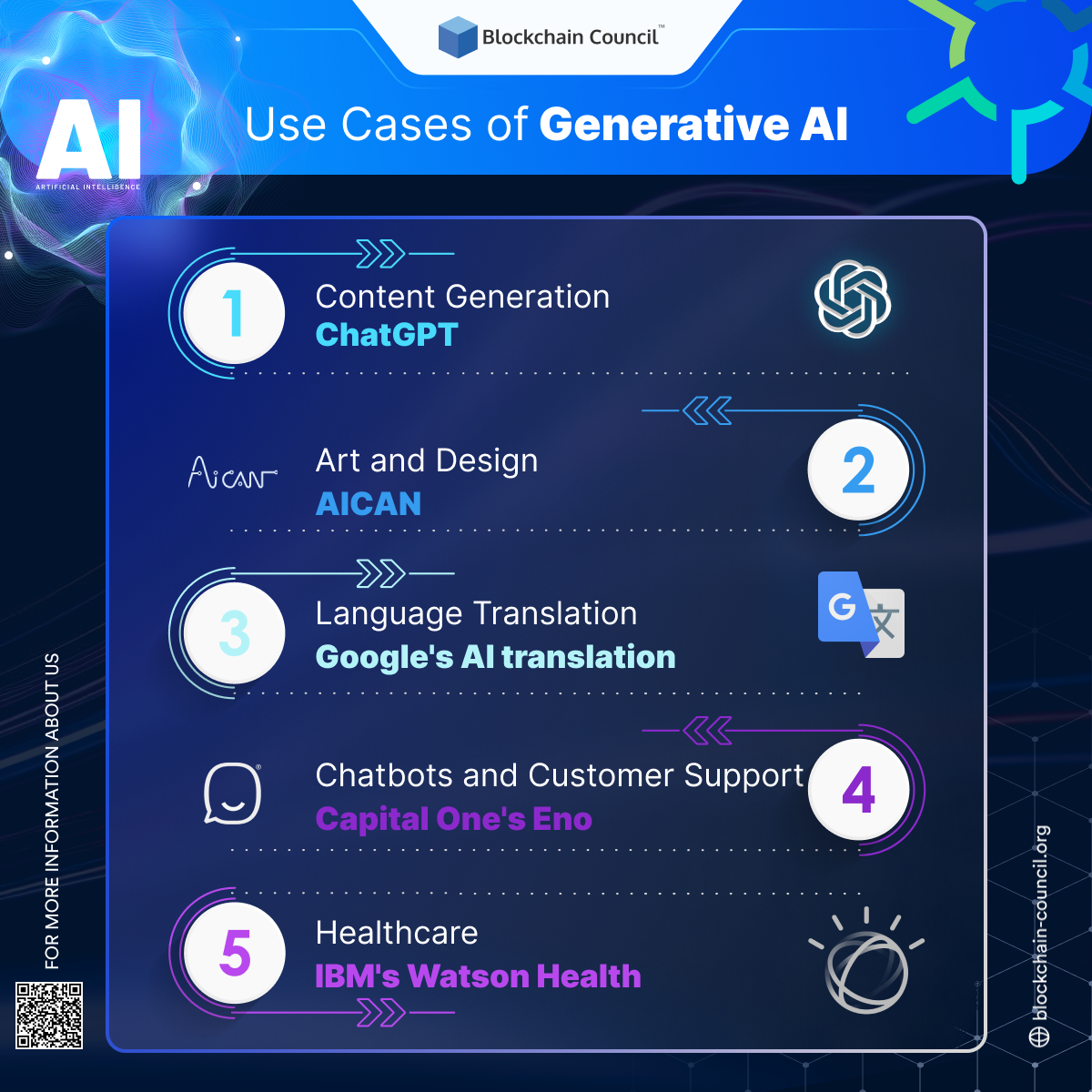
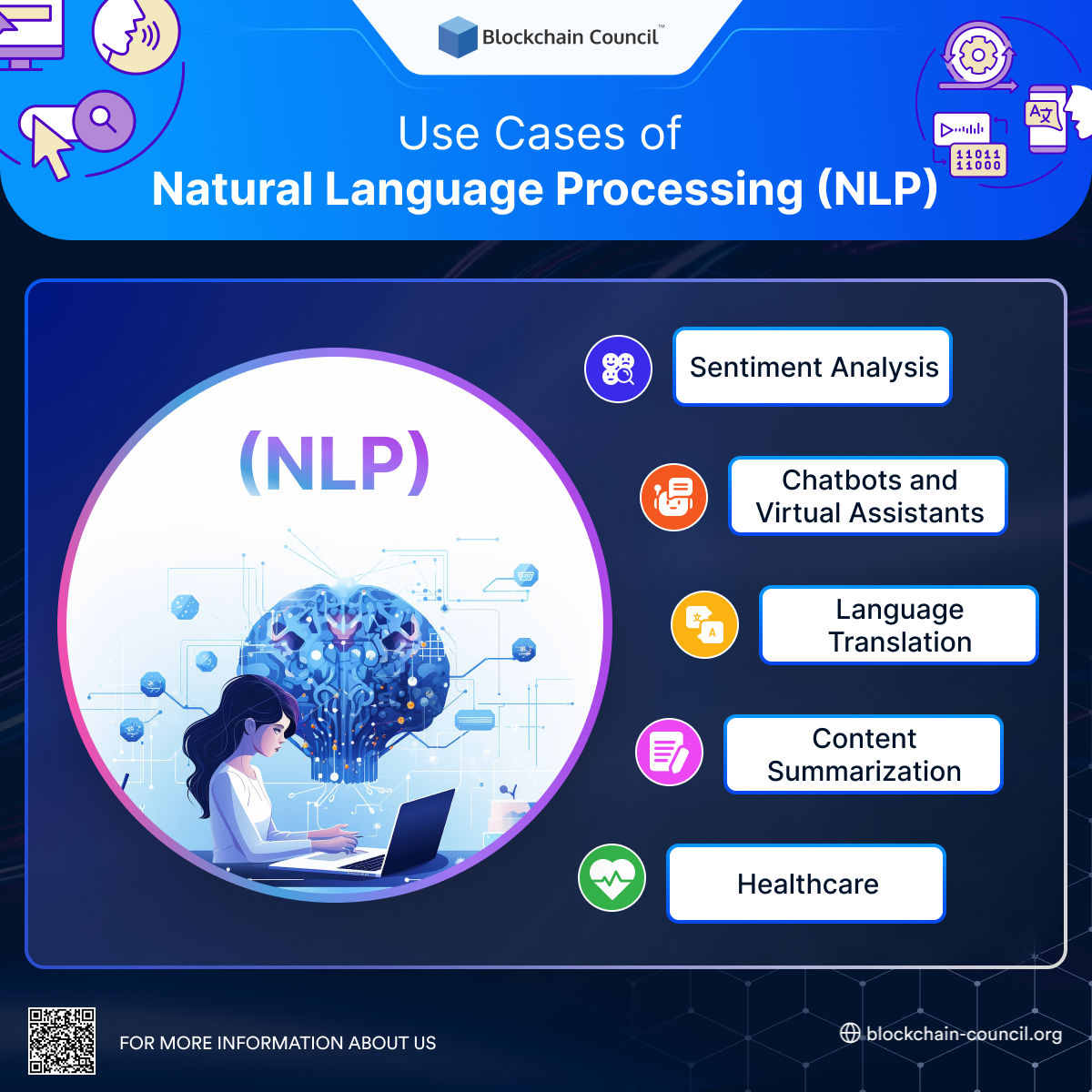
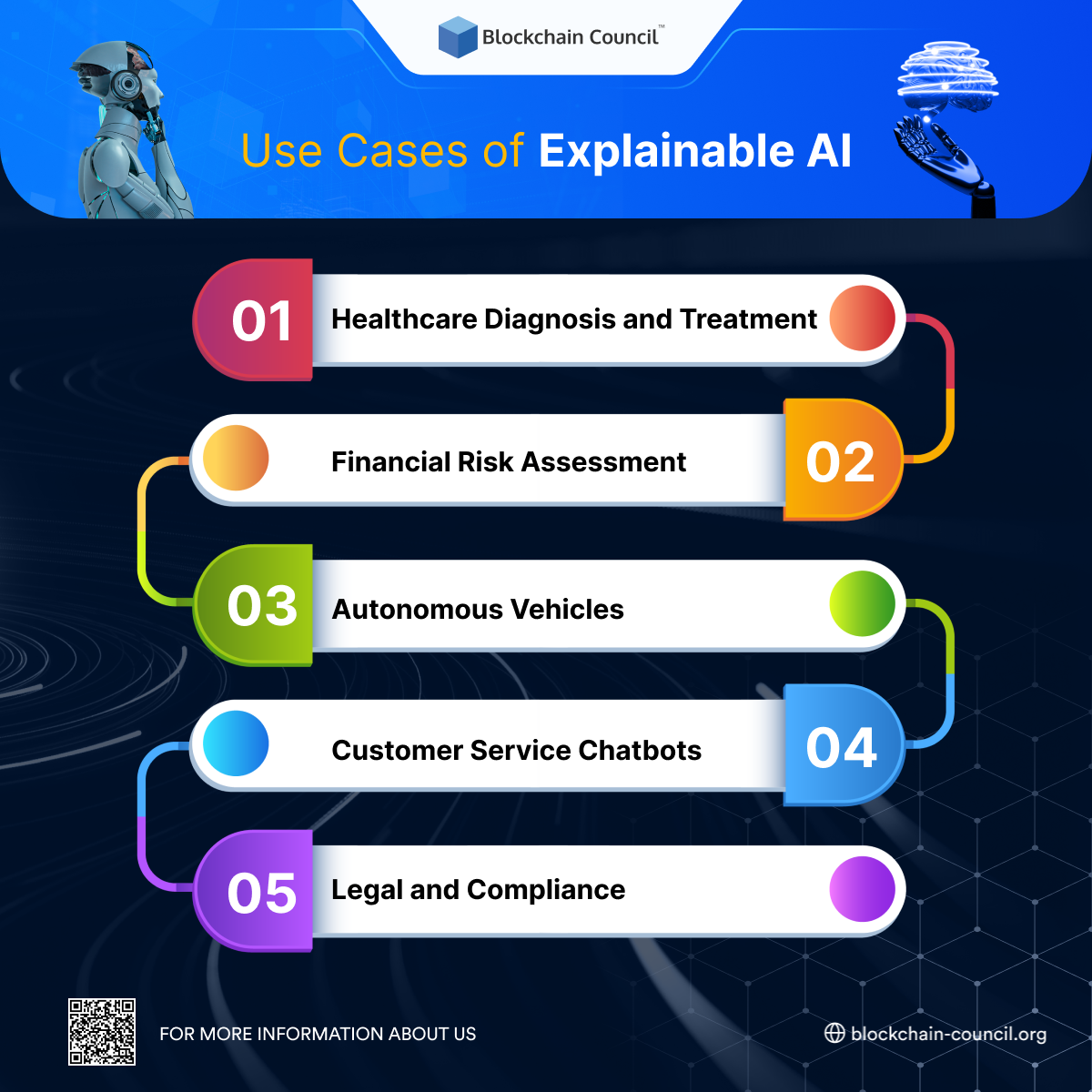
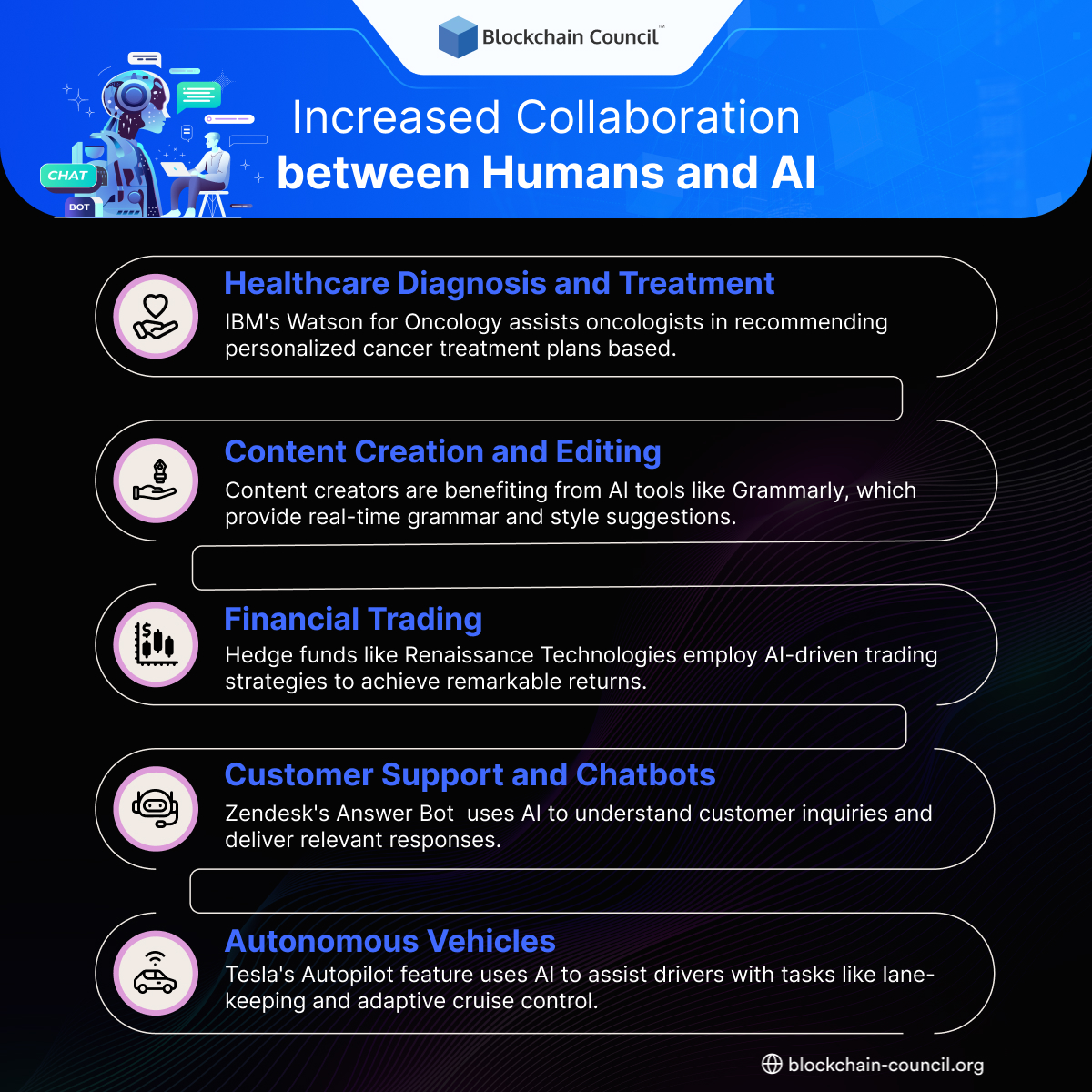
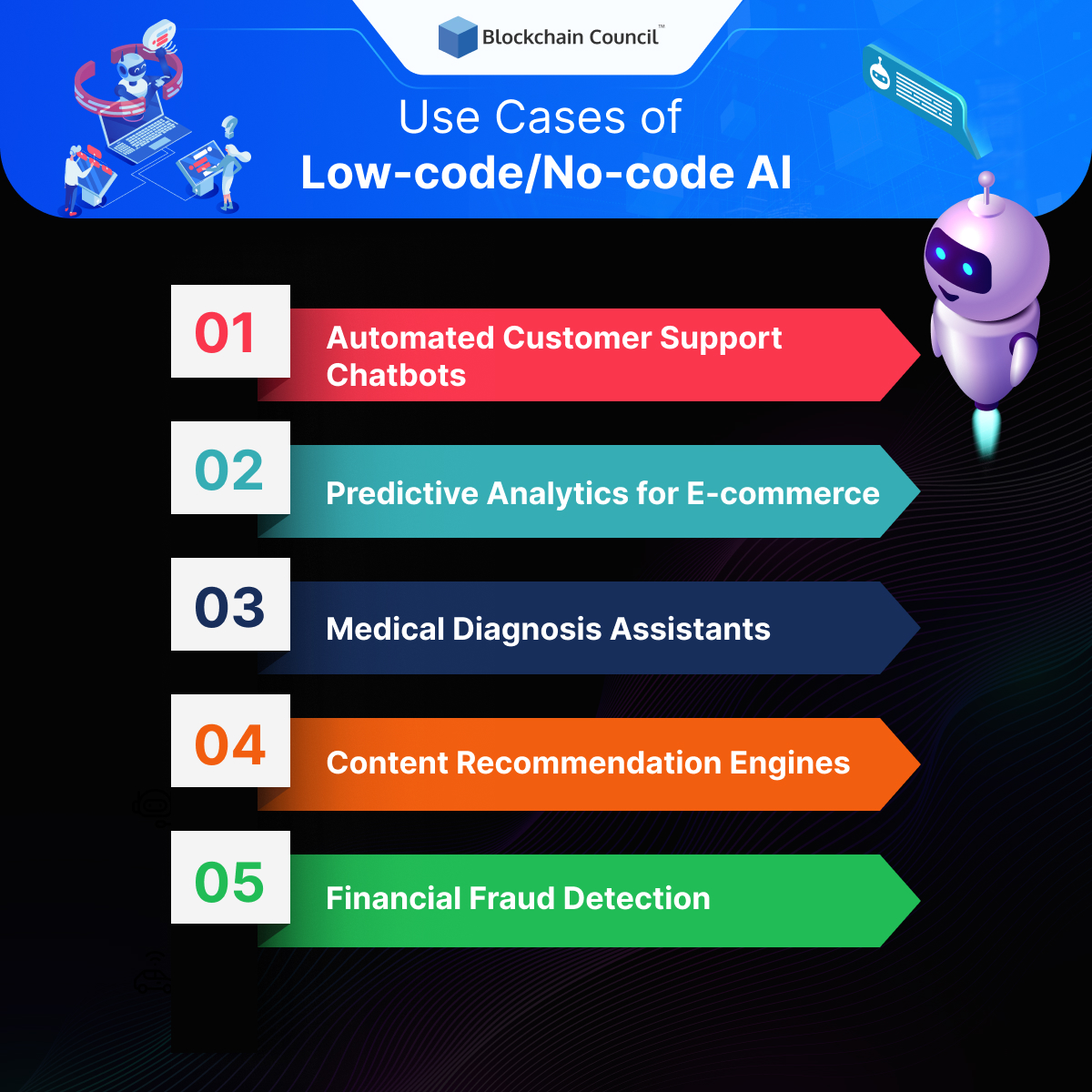
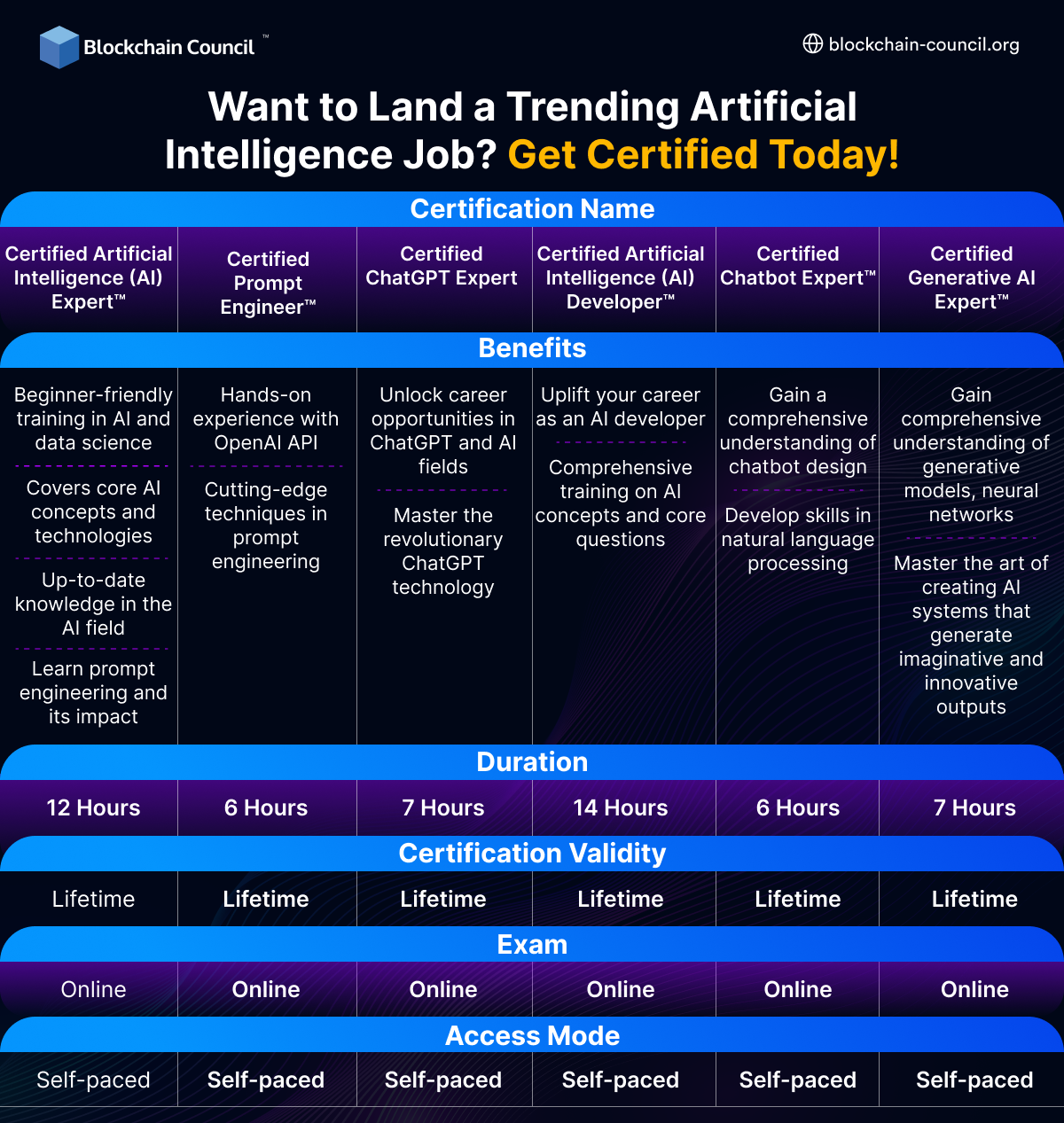




 Guides
Guides News
News Blockchain
Blockchain Cryptocurrency
& Digital Assets
Cryptocurrency
& Digital Assets Web3
Web3 Metaverse & NFTs
Metaverse & NFTs
